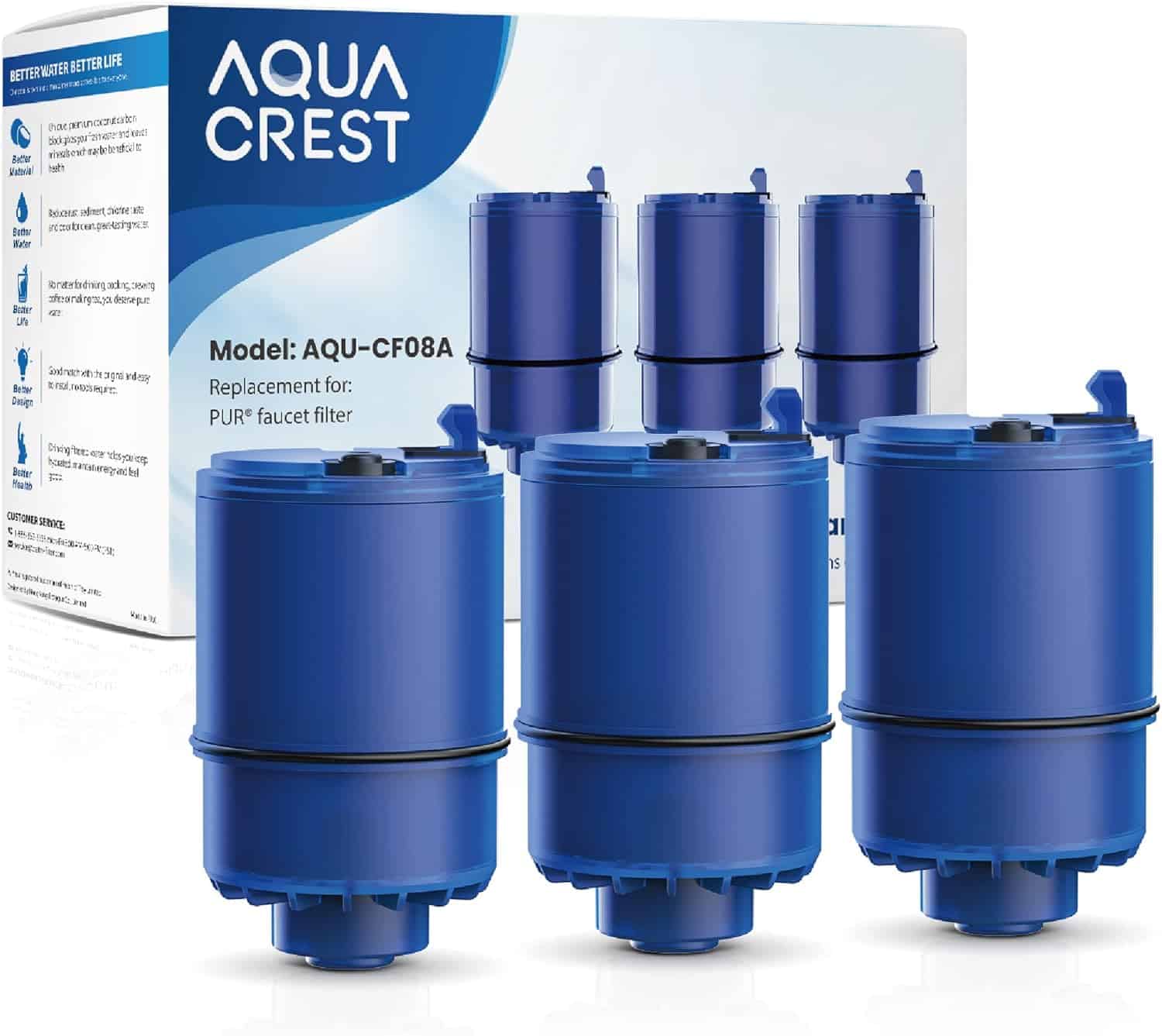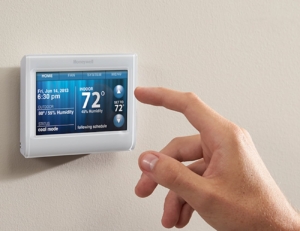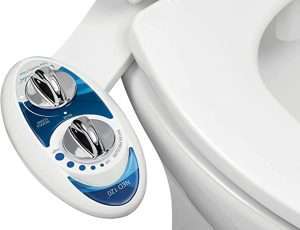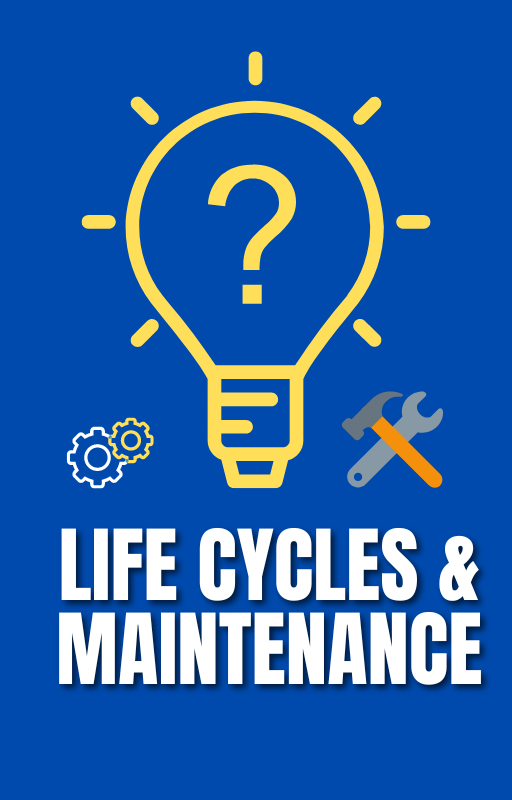10 Tips for Maximizing Energy Efficiency in Your Kitchen Range Reducing energy usage is a hot topic, and your kitchen range is one of the appliances that could be sucking up more power than necessary. But there’s good news – there are plenty of ways to increase your energy efficiency and save on those monthly bills. This post will discuss 10 tips for maximizing energy efficiency in your kitchen range. From simple changes in cooking habits to investing in energy-saving appliances, we’ve got you covered. So, are you ready to cook up some energy savings? Let’s dive in!
10 Tips for Maximizing Energy Efficiency in Your Kitchen Range
Tip 1: Look for ENERGY STAR Certification, Consider Induction Cooktops
In today’s fast-paced world, energy efficiency is an aspect to consider when it comes to household appliances. This is particularly true for kitchen ranges, as they are one of the most energy-intensive appliances we use on a daily basis. By following a few simple tips, you can significantly reduce your energy consumption and contribute to a greener environment. In this section, we will explore the first tip: looking for ENERGY STAR certification and considering induction cooktops.
ENERGY STAR Certification: A Symbol of Efficiency
When shopping for a new kitchen range, it’s essential to keep an eye out for the ENERGY STAR certification. ENERGY STAR is a government-backed program that identifies energy-efficient products. By choosing an ENERGY STAR certified range, you can be confident that it meets strict energy efficiency guidelines set by the U.S. Environmental Protection Agency (EPA).
ENERGY STAR certified ranges are designed to use less energy without compromising performance. They employ advanced technologies and innovative features that help reduce energy waste. By investing in an ENERGY STAR certified range, you can save money on your energy bills while minimizing your carbon footprint.
Consider Induction Cooktops for Superior Efficiency
One particular type of kitchen range that stands out in terms of energy efficiency is the induction cooktop. Unlike traditional gas or electric cooktops, induction cooktops use magnetic fields to directly heat the cookware while the surface remains cool to the touch. This method of heating is incredibly efficient, as it minimizes heat loss and ensures that almost all the energy goes directly into cooking the food.
Induction cooktops heat up faster than other types of cooktops, reducing the time you spend waiting for your pots and pans to heat up. Additionally, they offer precise temperature control and heat distribution, allowing you to cook your meals more efficiently. With induction cooktops, you can achieve the desired cooking results while consuming less energy.
Another advantage of induction cooktops is their safety features. Since the surface itself doesn’t get hot, it poses a lower risk of burns or accidental fires. This makes them an excellent choice for households with young children or elderly individuals.
Tip 2: Maximize Energy Efficiency with Smart Cooking Practices
In addition to choosing an energy-efficient kitchen range, there are several smart cooking practices that can help you maximize energy efficiency in your kitchen. By following these tips, you can reduce energy waste and lower your utility bills while still enjoying delicious meals.
Match Cookware to Burner Size
One simple yet effective way to increase energy efficiency in your kitchen is to match the size of your cookware to the size of the burner you are using. Using a small pot on a large burner, for example, can lead to significant heat loss as the flames extend beyond the pot’s base. This not only wastes energy but also prolongs the cooking time.
Conversely, using a large pot on a small burner can result in uneven heating and prolonged cooking times. By selecting the right-sized cookware for each burner, you ensure that the heat is distributed evenly and efficiently, reducing energy waste and allowing your food to cook more quickly.
Use Lids When Cooking
Believe it or not, using lids while cooking can make a noticeable difference in energy efficiency. When you cover your pots and pans with lids, you trap the heat inside, creating a more controlled cooking environment. This helps to retain heat, reduce cooking times, and prevent unnecessary energy loss.
By using lids, you can also preserve moisture in your food, resulting in more flavorful dishes. Additionally, cooking with lids minimizes the need to crank up the heat, as the trapped heat inside the covered pot or pan is sufficient to cook your food thoroughly. This not only saves energy but also keeps your kitchen cooler, especially during hot summer months.
Preheat Efficiently
Preheating your oven is a common step in many recipes, but did you know you can preheat more efficiently? Most modern ovens heat up relatively quickly, so preheating for an extended period is often unnecessary. Instead, you can minimize energy waste by preheating your oven for the recommended time stated in your recipe and avoiding excessive preheating.
To further optimize preheating efficiency, avoid opening the oven door unnecessarily. Each time you open the oven door, heat escapes, and the oven has to work harder to regain the lost heat. Use the oven light or a timer to keep track of your cooking progress instead of constantly opening the oven door to check on your food.
10 Tips for Maximizing Energy Efficiency in Your Kitchen Range
Tip 3: Clean Burners and Cooktop Regularly, Check and Replace Gaskets and Seals
Efficiency is the key when it comes to your kitchen range, and one important aspect of maintaining efficiency is keeping your burners and cooktop clean. In this section, we will explore the importance of regular cleaning and the significance of checking and replacing gaskets and seals.
Clean Burners and Cooktop Regularly
Regular cleaning of your burners and cooktop not only ensures optimal performance but also enhances energy efficiency. Over time, food particles, grease, and spills can accumulate on the burners and cooktop surface, hindering the heat distribution and causing your range to work harder than necessary.
To clean your burners, start by removing them from the range. Soak them in warm, soapy water to loosen any debris. Use a soft brush or sponge to scrub away any remaining residue. For stubborn stains, you can make a paste using baking soda and water and gently scrub until the stains disappear. Rinse the burners thoroughly and let them dry completely before placing them back on the range.
When it comes to cleaning the cooktop surface, it’s important to use cleaners that are specifically designed for your range’s material. Avoid abrasive cleaners that could damage the surface. Follow the manufacturer’s instructions for cleaning and make sure to wipe away any spills or stains immediately to prevent them from becoming harder to remove later.
Check and Replace Gaskets and Seals
Gaskets and seals play a role in maintaining the energy efficiency of your kitchen range. These components create a tight seal, preventing heat from escaping and ensuring that your range functions optimally. Over time, gaskets and seals may wear out or become damaged, compromising their effectiveness.
Regularly inspect the gaskets and seals around the oven door and cooktop to ensure they are in good condition. Look for signs of wear, such as cracks, tears, or gaps. If you notice any issues, it’s important to replace them promptly to prevent energy loss and potential safety hazards.
To replace gaskets and seals, refer to your range’s user manual for specific instructions. In most cases, you will need to purchase replacement parts that are compatible with your range model. Follow the manufacturer’s guidelines to ensure proper installation and optimal performance.
By regularly cleaning your burners and cooktop and checking and replacing gaskets and seals as needed, you can maximize the energy efficiency of your kitchen range. These simple maintenance tasks go a long way in not only saving energy but also extending the lifespan of your range. Stay tuned for more tips on how to make your kitchen range more energy-efficient!
10 Tips for Maximizing Energy Efficiency in Your Kitchen Range
Tip 4: Select the Right Cookware and Utilize Oven Thermometers
When it comes to optimizing the energy efficiency of your kitchen range, selecting the right cookware and utilizing oven thermometers are two important factors to consider. In this section, we will explore these tips in detail and explain how they can contribute to saving energy and reducing your utility bills.
Select the Right Cookware
Choosing the right cookware can make a significant difference in the energy efficiency of your kitchen range. Here are some key considerations to keep in mind:
- Material: Opt for cookware made of materials that conduct heat efficiently, such as stainless steel, copper, or cast iron. These materials distribute heat evenly and can reduce cooking time, thereby saving energy.
- Size: Use appropriately-sized cookware for your burners. Using a small pan on a large burner can waste energy as heat escapes around the sides. Conversely, using a large pan on a small burner can result in longer cooking times and increased energy consumption.
- Flat Bottom: Ensure that your cookware has a flat bottom that makes good contact with the burner. Warped or uneven pans can lead to heat loss and inefficient cooking.
- Lids: Utilize lids while cooking whenever possible. This helps to trap heat inside the cookware, allowing you to cook at lower temperatures and reduce energy usage.
By being mindful of these factors when selecting your cookware, you can maximize energy efficiency and achieve better cooking results.
Utilize Oven Thermometers
Oven thermometers are indispensable tools for ensuring accurate temperature readings in your oven. Here’s why they are important:
- Calibration: Ovens can often have temperature variations, which may lead to inefficient cooking and energy wastage. By using an oven thermometer, you can calibrate your oven and adjust the temperature accordingly to ensure accurate cooking.
- Energy Conservation: A properly calibrated oven consumes less energy by maintaining the desired temperature consistently. This reduces the need for the oven to work harder to compensate for temperature fluctuations, resulting in energy savings.
- Cooking Precision: Oven thermometers allow you to monitor and adjust the temperature precisely. This ensures that your food is cooked evenly and at the desired doneness, eliminating the need for unnecessary cooking time and energy consumption.
By utilizing oven thermometers, you can achieve optimal cooking results while minimizing energy usage and maximizing the efficiency of your kitchen range.
Tip 5: Use Toaster Ovens for Small Meals, Utilize Microwave for Quick Heating
In addition to choosing energy-efficient appliances for your kitchen range, there are small changes you can make in your cooking habits that can further maximize energy efficiency. Two simple yet effective methods are using toaster ovens for small meals and utilizing the microwave for quick heating. Let’s explore these options further.
Toaster Ovens for Small Meals
Toaster ovens are a versatile and energy-efficient alternative to using your range for cooking smaller meals. They are designed to quickly heat up and cook a variety of foods, from toasting bread and bagels to baking small dishes. By utilizing a toaster oven, you can save energy by avoiding the need to preheat a large oven for a small portion of food.
When using a toaster oven, be mindful of the cooking time and temperature settings. Adjusting the settings according to the size and type of food can ensure efficient and evenly cooked meals. Additionally, consider using the convection feature if your toaster oven has one. This feature circulates hot air, reducing cooking time and energy consumption.
Utilize Microwave for Quick Heating
The microwave is a time-saving appliance that can also contribute to energy efficiency in your kitchen. When you need to quickly heat up leftovers or beverages, using the microwave instead of your range can be more efficient.
Microwaves use electromagnetic waves to generate heat directly within the food, which is a more energy-efficient method compared to heating up an entire stovetop or oven. The quick heating capabilities of microwaves not only save time but also minimize the amount of energy required for heating small portions of food.
When using the microwave, ensure that you are using microwave-safe containers to avoid any hazards. Also, consider using microwave-safe covers or lids to prevent splattering and retain moisture, reducing the need for additional cooking time.
10 Tips for Maximizing Energy Efficiency in Your Kitchen Range
Tip 6: Use Convection Mode When Possible, Adjust Temperature and Cooking Time
Welcome back to our series on maximizing energy efficiency in your kitchen range! In this section, we will explore Tip 6, which focuses on the effective use of the convection mode and adjusting temperature and cooking time to save energy while preparing delicious meals. Let’s dive right in!
Use Convection Mode When Possible
One of the key energy-saving features of many modern kitchen ranges is the convection mode. Unlike conventional cooking methods, convection ovens use a fan to circulate hot air evenly throughout the cooking chamber. This constant circulation helps to reduce cooking time and temperature while ensuring even heat distribution. By utilizing the convection mode when possible, you can significantly lower your energy consumption without compromising the taste and texture of your dishes.
To take advantage of the convection mode, start by familiarizing yourself with the settings on your range. Look for the convection mode option and select it when appropriate, such as when baking or roasting. Keep in mind that cooking times may need adjustment due to the increased efficiency of convection cooking. However, the energy savings and improved results are well worth the slight modifications.
Adjust Temperature and Cooking Time
Another simple yet effective way to maximize energy efficiency in your kitchen range is by adjusting the temperature and cooking time. Most recipes provide general guidelines for these parameters, but they may not always be tailored to your specific range or personal preferences. By making a few tweaks, you can achieve the same delicious results while using less energy.
Start by preheating your oven only when necessary. Many recipes call for preheating, but it’s important to evaluate if it’s truly essential. For dishes that require longer cooking times, such as casseroles or roasts, you can often skip the preheating step altogether. This small adjustment can lead to significant energy savings over time.
Additionally, consider reducing the temperature specified in the recipe by 25°F (14°C). Lowering the temperature slightly won’t have a noticeable impact on the taste or cooking time, but it will save energy in the long run. Keep in mind that every range operates differently, so it may take a bit of trial and error to find the ideal temperature adjustments for your specific model.
Moreover, be mindful of the cooking time. Many recipes provide an estimated duration; remember that these are just guidelines. Check your food for doneness a few minutes earlier than suggested and adjust the cooking time accordingly. This prevents overcooking and unnecessary energy consumption.
Tip 7: Use Oven-Safe Cookware with Lids, Avoid Frequent Opening of Oven Door
Introduction
In this section, we’ll explore two important tips for maximizing energy efficiency in your kitchen range: using oven-safe cookware with lids and avoiding frequent opening of the oven door. By following these recommendations, you can ensure that you’re making the most of your kitchen range while conserving energy and reducing your utility bills.
Use Oven-Safe Cookware with Lids
When it comes to energy-efficient cooking, the choice of cookware plays a significant role. Using oven-safe cookware with lids can help you achieve better results while saving energy. Here’s why:
- Improved heat retention: Oven-safe cookware is designed to retain heat efficiently, allowing your food to cook evenly and thoroughly. By trapping heat within the cookware, you reduce the need for additional energy to compensate for heat loss.
- Faster cooking times: With oven-safe cookware and lids, you can expedite cooking times. The trapped heat, combined with the lid, creates a mini-oven effect, which effectively speeds up the cooking process. This means less time spent waiting for your meals to be ready and more energy saved in the long run.
- Prevents excess moisture loss: Using cookware with lids prevents excessive moisture from escaping during the cooking process. This helps to retain the natural juices and flavors of your food, resulting in tastier meals. Additionally, it reduces the need to add extra liquid or sauce, saving both energy and ingredients.
Avoid Frequent Opening of Oven Door
It may be tempting to check on your food or give it a quick stir by opening the oven door, but doing so can significantly impact energy efficiency. Here’s why you should avoid frequent opening of the oven door:
- Heat loss: Each time the oven door is opened, a significant amount of heat escapes. This forces the oven to work harder to maintain the desired temperature. By minimizing the number of times you open the oven door, you can prevent unnecessary heat loss and conserve energy.
- Extended cooking times: When the oven door is opened, the temperature inside drops, which leads to extended cooking times. To compensate for the heat loss, the oven has to work longer to bring the temperature back up. By keeping the oven door closed, you can reduce overall cooking times and save energy.
- Uneven cooking: The fluctuation in temperature caused by frequent door openings can result in unevenly cooked food. This means some parts may be overcooked while others remain undercooked. By keeping the oven door closed, you can maintain a consistent temperature and ensure even cooking throughout.
To avoid the need for frequent door openings, make sure you plan your cooking process well in advance. Check your recipe for any specific instructions or timings, and organize your cooking tasks accordingly. By doing so, you can minimize the need to open the oven door and optimize energy efficiency.
Remember, using oven-safe cookware with lids and avoiding frequent opening of the oven door are simple yet effective ways to maximize energy efficiency in your kitchen range. By incorporating these tips into your cooking routine, you can reduce energy waste and make a positive impact on both the environment and your utility bills.








